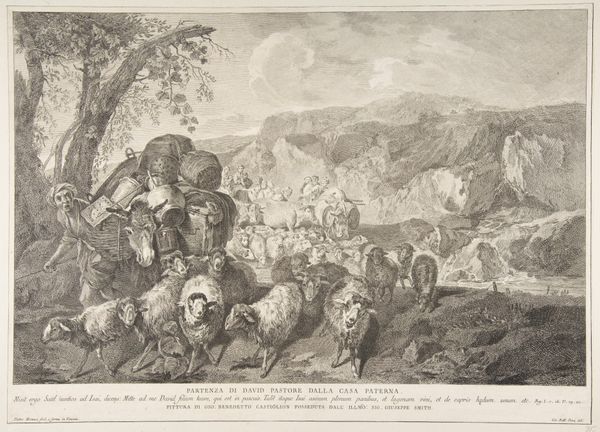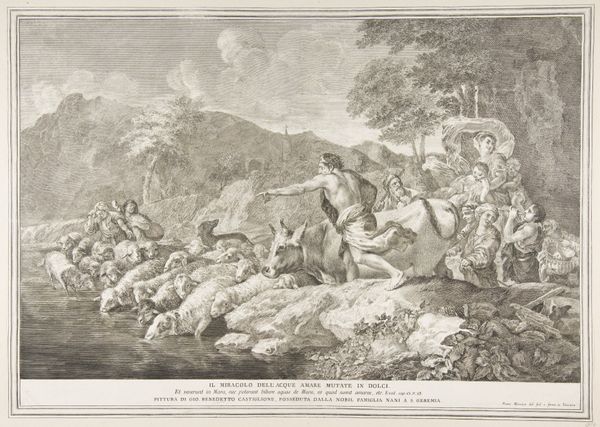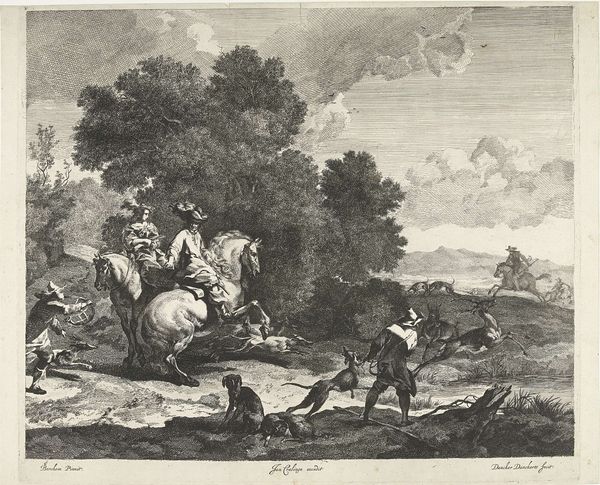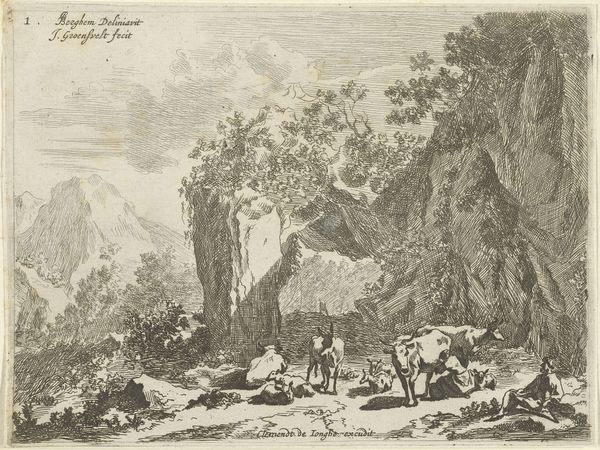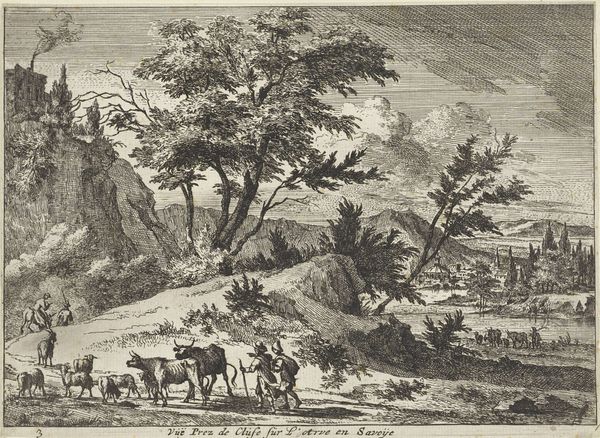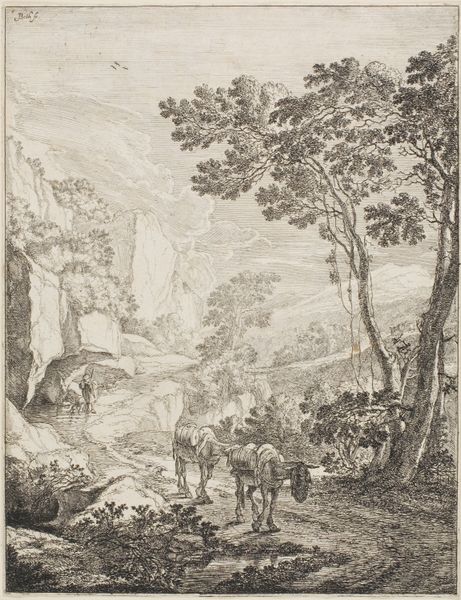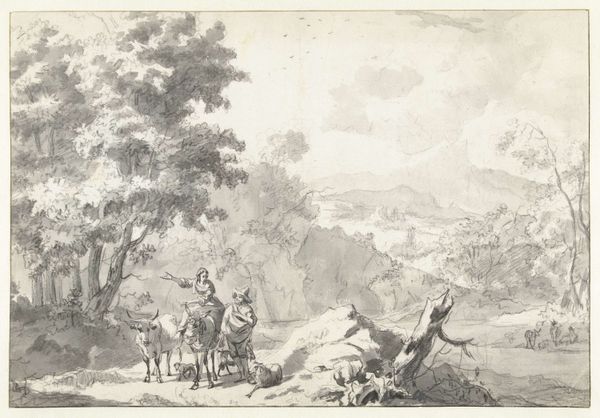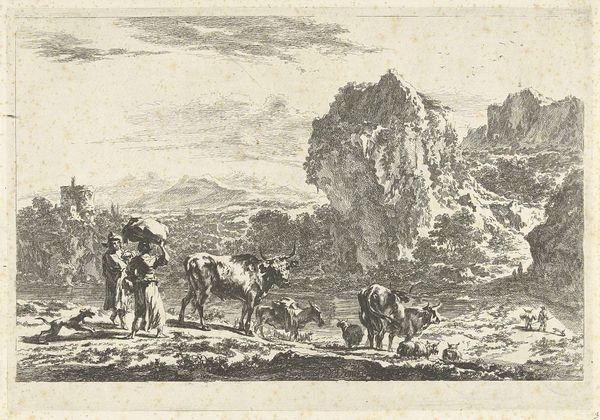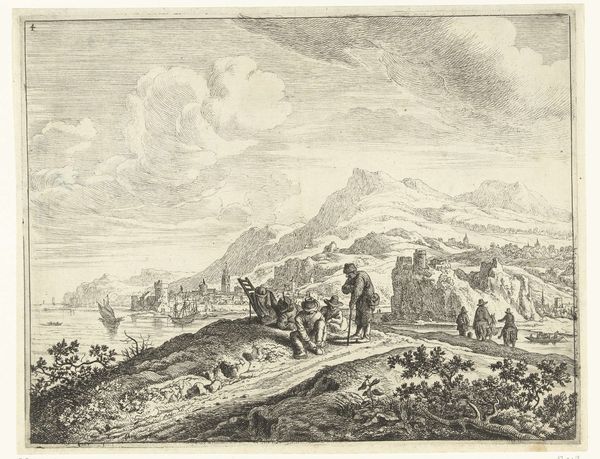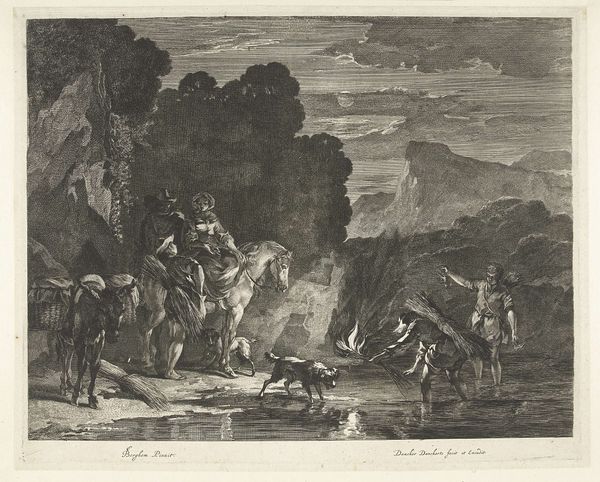
print, engraving
#
baroque
#
dutch-golden-age
# print
#
landscape
#
figuration
#
line
#
cityscape
#
history-painting
#
engraving
#
realism
Dimensions: height 388 mm, width 494 mm
Copyright: Rijks Museum: Open Domain
Curator: This is "Overval op een konvooi", or "Attack on a Convoy," an engraving dating from the late 17th century. Bastiaen Stopendael is credited with its creation and it currently resides here at the Rijksmuseum. Editor: Immediately, I'm struck by the sheer chaos of it all. It’s like a freeze-frame of pure violence, the composition drawing you into this whirlwind of struggling bodies and terrified horses. Curator: Absolutely, Stopendael captures a very specific historical reality: the dangers inherent in travel during the Dutch Golden Age. The societal role of depictions such as this print were critical in warning against potential risks, as the Dutch expanded into globalized commercial networks. Editor: Thinking about those networks, it makes me consider who the victims of this attack are, and who the perpetrators might be. What is their relationship to the surrounding landscape? I imagine the power dynamics playing out must have involved themes of class, potentially even race, if this convoy was transporting goods connected to colonial exploits. Curator: Exactly! This wasn't just random banditry; it was very likely shaped by existing power structures, be they socio-economic, even tied to international relations in some cases. How were those imbalances shaping public understanding of 'security'? Editor: And the role the print played within the social context. Prints like these weren't just art objects. They were often propaganda, shaping narratives. Was Stopendael's depiction intended to inspire fear, or perhaps glorify those who resisted these attacks? How did this affect people viewing it? Curator: Its visual style lends itself to that ambiguity, don't you think? The chaotic lines heighten the feeling of uncertainty. What do you suppose the artist or his patrons want viewers to dwell on as a result of these attacks? The fear or resistance of its reality? Editor: For me, viewing it today I wonder about the people outside the frame, beyond the image. How does representing that kind of one-sided power and aggression contribute to or contest those legacies of colonialism? Does it simply reproduce violence? Curator: Considering this print through a contemporary lens offers crucial perspective. Its historical significance cannot overshadow the complexities of its representation. The questions raised, hopefully, serve to ignite meaningful reflection. Editor: Indeed. Hopefully we have invited others to reconsider how these older depictions connect with pressing discussions.
Comments
No comments
Be the first to comment and join the conversation on the ultimate creative platform.
